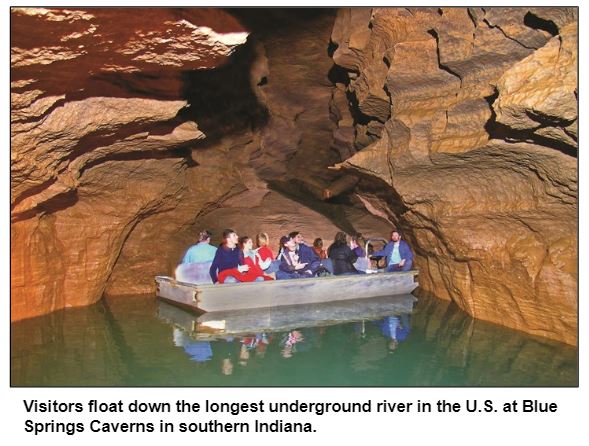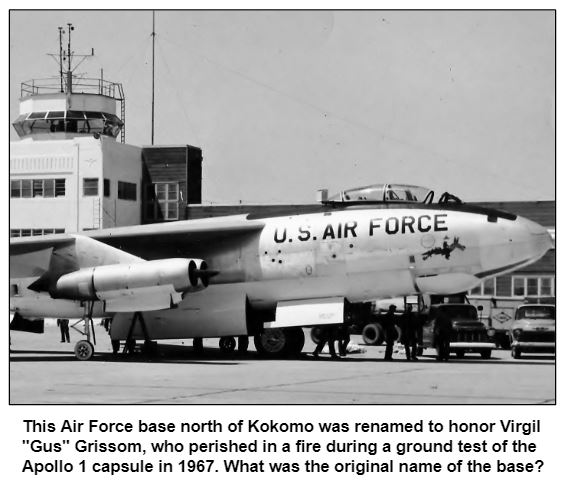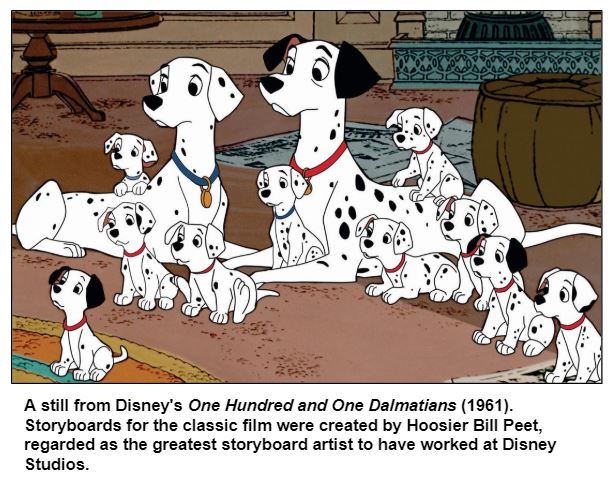
Saturdays, noon to 1 p.m. ET on WICR 88.7 FM.
Or stream audio live from anywhere on WICR Online!
You can listen to recent shows by clicking the podcast links below, or check out our extensive archive of past shows available as podcasts.
July 11, 2020
Astronaut food and other unexpected links between the space program and Indiana
Ever since the selection of the original Mercury 7 astronauts in 1959 marked the dawn of the U.S. space program, it's been well known that a significant percentage of NASA astronauts, mission specialists and engineers have spent portions of their lives in Indiana. After all, Purdue University has long been nicknamed "Mother of Astronauts."
Less well known, however, is Indiana's connection to the dehydrated food that has been the chow for many of the U.S. space program's intrepid cosmic explorers.
And then there's the Hoosier state's link to the physician who treated several astronauts who became household names during the 1960s, including Virgil "Gus" Grissom, John Glenn and Neil Armstrong.
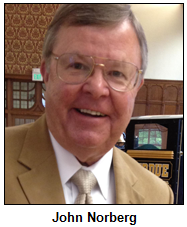 Hoosier History Live will spotlight these unexpected links just as space travel is receiving renewed attention with the recent launch of a capsule by SpaceX, the rocket company founded by Elon Musk that took two NASA astronauts to the International Space Station. The mission "ended a nine-year launch drought for NASA, the longest such hiatus in its history," according to a USA Today report. (NASA had been relying on Russian spaceships to take U.S. astronauts to and from the space station).
Hoosier History Live will spotlight these unexpected links just as space travel is receiving renewed attention with the recent launch of a capsule by SpaceX, the rocket company founded by Elon Musk that took two NASA astronauts to the International Space Station. The mission "ended a nine-year launch drought for NASA, the longest such hiatus in its history," according to a USA Today report. (NASA had been relying on Russian spaceships to take U.S. astronauts to and from the space station).
Note to listeners who may be day-dreaming about blasting off as a civilian space traveler: Your prep could be overseen by a Purdue alum who works with civilians likely to become the first space tourists.
Our guest, Purdue historian John Norberg of Lafayette, will share details about various intriguing - but seldom highlighted - links between Indiana and the space program. A retired columnist for the Lafayette Journal & Courier who has been inducted into the Indiana Journalism Hall of Fame, John has been a guest on previous shows, including those that explored Astronauts and Purdue and Amelia Earhart's connections to Indiana.
So what's the skinny on the astronauts' food?
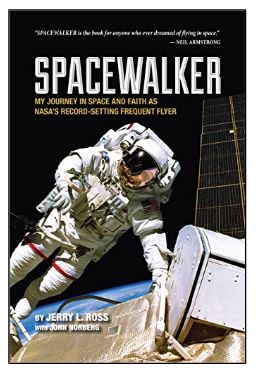
Her husband liked to quip that he was the only one among his colleagues who enjoyed "home cooking" while in space. Both Karen and Jerry Ross, who grew up in Crown Point, Ind., are now retired. Our guest John Norberg collaborated with Jerry Ross on his autobiography, Spacewalker: My Journey in Space and Faith as NASA's Record-Setting Frequent Flier (Purdue University Press, 2013).
In addition to sharing details about Karen Ross' cosmic culinary work, John Norberg will discuss Dr. Steve Beering, the former, long-time Purdue president (1983-2000) who died in April at age 87. Beginning in the early 1960s, Dr. Beering was the physician for Grissom, a native of Mitchell, Ind., Glenn, Alan Shepard and others among the original Mercury 7 astronauts.
Dr. Beering, who was on the medical staff at Lackland Air Force Base in Texas then, later gave Neil Armstrong his first physical for the astronaut program. Dr. Beering went on to become the dean of the IU School of Medicine before serving as Purdue's president.
Currently, Purdue alum Beth Moses (class of '92) is an astronaut instructor training people who will become the first space tourists. Although she works for Virgin Galactic, the company that hopes to send tourists into space, Beth Moses officially is classified as a NASA astronaut, according to John Norberg. She traveled into space on a Virgin Galactic test flight in 2019.
Roadtrip: Blue Springs Caverns
Guest Roadtripper and educator Ken Marshall suggests we visit "America's greatest voyage underground" - Blue Springs Caverns, located in southern Indiana, just west of US 50 between Bedford and Mitchell.
The cave system is a karst and river type cave formation and drains a 15 mile sinkhole plain. Blue Springs Caverns contains 21 miles of surveyed passages and has the longest known subterranean river in the United States, with approximately 3 miles of navigable river. And of course, you can take a boat ride on the underground river!
You'll also want to check out the Colglazier Visitor Center, named for the farm family that once hosted visitors to the cave entrance on their dairy farm.
On the front porch of the visitor center, kids of all ages can "prospect" for gemstones and fossils at the Myst'ry River Gemstone Mine.
Ken says that visitors should be prepared for some exercise: you must walk 400 feet to get down into the cave to take the boat trip. And of course, you must also walk back up at the end! As a comparison, the Soldiers and Sailors Monument in downtown Indianapolis is only 284 feet high.
Please note: in this time of Covid-19 pandemic, all visitors are required to wear a mask in the cave and visitor center.
History Mystery
In 1968, one year after the tragic death of astronaut Virgil "Gus" Grissom in a fire during a ground test of the Apollo 1 capsule that he was commanding, a U.S. Air Force base north of Kokomo was renamed in honor of the Indiana native.
Established in the 1940s as a Naval installation, it became an active Air Force base under a different name. After being renamed Grissom Air Force Base, it continued to serve in that capacity until the 1990s. Then it was downsized to an Air Force Reserve installation, with the name changed again to Grissom Air Reserve Base to reflect the designation. The installation includes the Grissom Air Museum, a military aviation museum with an outdoor display of more than 20 aircraft.
Question: What was the original name of the Air Force installation that today is the Grissom Air Reserve Base?
The call-in number is (317) 788-3314. Please do not call in to the show until you hear Nelson pose the question on the air, and please do not try to win if you have won any other prize on WICR during the last two months. You must be willing to give your first name to our engineer, you must answer the question correctly on the air and you must be willing to give your mailing address to our engineer so we can mail the prize pack to you.
The prizes this week are two tickets to the Seiberling Mansion and a gift certificate to Windmill Grill, all in Kokomo, courtesy of Howard County Historical Society and Peggy Hollingsworth.
Share our Hoosier History Live podcasts, please!
Calling all past guests, fans, listeners, readers, etc. Please copy and paste any of our podcast links to any website, social media platform, or blog! Any media that pertains to the show's topic. Or doesn't petain! We trust your judgement.
Don't worry about copyright; all of our credits, including underwriter credits, are already in the podcast. Just copy and paste the link. If you don’t know how to do it, have your grandkids do it!
Can't find a particular podcast you'd like to share or listen to? Click here to get to a searchable index of our shows and podcasts; you can also click the link at the top of our website and newsletter.
Sharing the link to our podcasts is great for our "numbers" and distribution statistics. It helps us, really!
Nelson Price, host and historian
Molly Head, producer/general manager, (317) 927-9101
Mick Armbruster, associate producer
Cheryl Lamb, administrative manager
Richard Sullivan, senior tech consultant
Pam Fraizer, graphic designer
Garry Chilluffo, consultant
Please tell our sponsors that you appreciate their support!

 For organizational sponsorship, which includes logos, links, and voiced credits in the show and in podcasts, email support@hoosierhistorylive.org, or call (317) 927-9101 for information. Our podcast listens are increasing at a rate of 17% a month and we are being distributed on Indiana Memory and the National Digital Public Library. As we have always believed, the internet distribution of Hoosier History Live is taking us to the top! Thanks also to Visit Indy, Fraizer Designs, WICR-FM, Henri Pensis, Aaron Duvall, Kielynn Tally, Justin Clark, and many other individuals and organizations.
For organizational sponsorship, which includes logos, links, and voiced credits in the show and in podcasts, email support@hoosierhistorylive.org, or call (317) 927-9101 for information. Our podcast listens are increasing at a rate of 17% a month and we are being distributed on Indiana Memory and the National Digital Public Library. As we have always believed, the internet distribution of Hoosier History Live is taking us to the top! Thanks also to Visit Indy, Fraizer Designs, WICR-FM, Henri Pensis, Aaron Duvall, Kielynn Tally, Justin Clark, and many other individuals and organizations.
Thank you!
We'd like to thank the following recent, new and renewal contributors whose donations help make this show possible!
- Ryan Zumbahlen
- David Yount
- Linda Gugin and Jim St. Clair
- Doug Winnings
- Peggy Sabens
- Carl and Kathleen Widland
- Carol Bacon
- Rachel Perry
- Tom Swenson
- Dr. James Madison
- Stacia Gorge
- Dr. Geoffrey Golembiewski
- Clarke Kahlo
- Jim and Nancy Johnson
- Marion Wolen
- Robin Winston
July18, 2020 - coming up
Disney animator Bill Peet, illustrator and children's book author
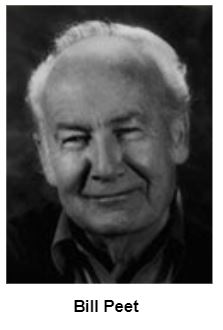
After growing up in Indianapolis during the years following World War I - and attending Arsenal Technical High School and what was then the John Herron Institute of Art - Bill Peet went on to be generally considered the greatest storyboard artist at Disney Studios. Peet is the only artist to have created all of the storyboards for a Disney animated movie; he did that for two classics, One Hundred and One Dalmatians (1961) and The Sword in the Stone (1963). (During the era before computer-generated animation, several storyboard artists typically would create one movie.)
During and after his 27 years at the studio - where Peet's relationship with founder Walt Disney was periodically volatile - he wrote and illustrated about 30 children's books sold internationally. Almost all of his books - which include The Wump World (1970) and The Ant and the Elephant (1972) - remain in print today, nearly 20 years after his death in 2002.
Peet's books fascinated Ken Avidor as a boy growing up in New York, inspiring him to become a sketch artist and cartoonist. Ken, who now is based in Indianapolis, will be Nelson's guest to share insights about Peet, whose years with Disney included significant work on such beloved films as Pinocchio (1940) and Dumbo (1941) - as well as the early development of The Jungle Book (1967), although a rift with Walt Disney resulted in Peet leaving the studio during production of that animated classic.
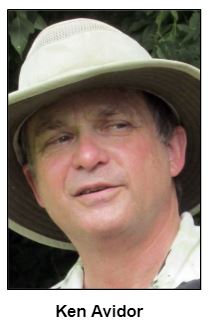
So why isn't Peet better remembered, even in his home state?
That's a question Ken Avidor will discuss during our show, along with sharing insights about the themes that reoccur in Peet's work. Cruelty within the animal kingdom - along with the impact of human "progress" on animals - were predominant storylines.
Born in the Ohio River town of Grandview, Ind., in 1915, Bill Peet was 3 years old when his family moved to the eastside of Indianapolis. Although family members lived in several houses, Peet wrote in Bill Peet: An Autobiography (1989) that his happiest years were when they lived with his maternal grandmother in what is now called the Emerson Heights neighborhood. That's when Peet's father, whom he described as a continual source of conflict, abandoned the family for 10 years.
Also during his youth, Peet explored creeks and woods near his home, sketching wildlife. At Tech High School, Peet wrote, he was failing almost all of his classes until a friend advised him to study art.
© 2020 Hoosier History Live. All rights reserved.
|





